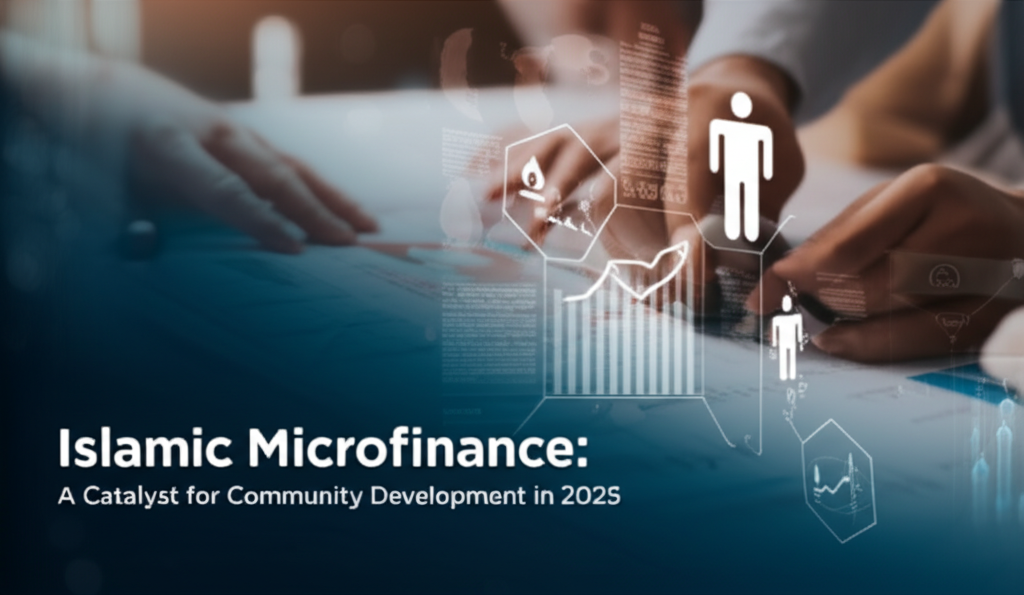Microfinance, often hailed as a powerful tool for poverty alleviation and economic empowerment, has gained significant traction in recent years. Within this realm, Islamic microfinance stands out as a unique and impactful approach, rooted in the principles of Islamic finance.
This article delves into the world of Islamic microfinance, exploring its key components, benefits, real-world applications, and answers to frequently asked questions.
Understanding Islamic Microfinance
Islamic microfinance, as the name suggests, is a system of providing financial services, particularly microloans, to low-income individuals and communities, adhering to the ethical and religious guidelines of Islamic Sharia law. Unlike conventional microfinance, which often involves interest-based lending (riba), Islamic microfinance emphasizes profit and loss sharing (Mudarabah) and other Sharia-compliant financial instruments. This unique approach ensures that both the lender and borrower share in the risks and rewards of the venture, fostering a sense of partnership and mutual responsibility.
Key Components of Islamic Microfinance
Several key principles underpin the framework of Islamic microfinance:
Profit and Loss Sharing (Mudarabah)
Mudarabah is a cornerstone of Islamic microfinance. In this arrangement, the lender (the rabb-al-mal) provides capital, while the borrower (the mudarib) manages the venture. Profits are shared according to a pre-agreed ratio, and losses are borne by both parties in proportion to their investment.
Cost-Plus Financing (Qard Hasan)
This method involves lending money without charging interest but requiring the borrower to repay the principal amount plus a nominal fee to cover the lender’s administrative costs. This ensures that the lender is compensated for their service while avoiding the prohibition of riba.
Equity Financing (Musharakah)
Musharakah involves two or more parties pooling their resources to establish a joint venture. Profits and losses are shared according to the agreed-upon ownership structure.
Ethical Considerations
Islamic microfinance places a strong emphasis on ethical considerations, including:
- Transparency and accountability
- Fairness and justice
- Social responsibility
Benefits and Importance
Islamic microfinance offers numerous benefits for both individuals and communities:
Empowering the Underserved
By providing access to finance for those excluded from traditional banking systems, Islamic microfinance empowers individuals to start businesses, improve their livelihoods, and break the cycle of poverty.
Promoting Financial Inclusion
Islamic microfinance plays a crucial role in promoting financial inclusion, ensuring that everyone, regardless of their background or income level, has access to essential financial services.
Economic Growth and Development
By fostering entrepreneurship and small business development, Islamic microfinance contributes to economic growth and job creation.
Social Impact
By supporting projects that address social needs, Islamic microfinance can contribute to improving healthcare, education, and other essential services in marginalized communities.
Practical Applications
Islamic microfinance has taken root in various sectors, empowering individuals and communities around the world:
Agriculture
Microloans have enabled farmers to invest in improved seeds, fertilizers, and irrigation systems, boosting agricultural productivity and incomes.
Small Businesses
Entrepreneurs have used microfinance to start and expand small businesses, creating employment opportunities and contributing to local economies.
Women’s Empowerment
Islamic microfinance has been instrumental in empowering women economically, providing them with the means to support their families and contribute to society.
Education and Healthcare
Microfinance has also been used to fund educational initiatives and healthcare projects, improving access to essential services for marginalized communities.
Frequently Asked Questions
What is Islamic Microfinance?
Islamic microfinance is a system of providing microloans and other financial services to low-income individuals and communities, adhering to the principles of Islamic Sharia law. It emphasizes profit and loss sharing (Mudarabah), cost-plus financing (Qard Hasan), and other Sharia-compliant financial instruments, ensuring ethical and responsible lending practices.
How is Islamic Microfinance Different from Conventional Microfinance?
The key difference lies in the absence of interest-based lending (riba) in Islamic microfinance. Instead, it utilizes Sharia-compliant financial instruments like Mudarabah and Qard Hasan, where both lender and borrower share in the risks and rewards of the venture.
What are the Benefits of Islamic Microfinance?
Islamic microfinance offers numerous benefits, including:
- Empowering the underserved by providing access to finance.
- Promoting financial inclusion.
- Contributing to economic growth and job creation.
- Addressing social needs by supporting healthcare, education, and other essential services.
Who Can Benefit from Islamic Microfinance?
Individuals and communities who lack access to traditional banking services, particularly low-income entrepreneurs, small business owners, and marginalized groups, can greatly benefit from Islamic microfinance.
How Can I Get Involved in Islamic Microfinance?
Several ways to get involved include:
- Donating to Islamic microfinance institutions.
- Investing in Sharia-compliant microfinance funds.
- Volunteering your time and skills to support microfinance initiatives.
Conclusion
Islamic microfinance stands as a powerful force for positive change, empowering individuals, strengthening communities, and promoting inclusive economic growth. By adhering to ethical principles and fostering a sense of partnership, Islamic microfinance offers a sustainable and impactful approach to poverty alleviation and social development. As the world seeks innovative solutions to global challenges, Islamic microfinance presents a compelling model for creating a more just and equitable future.

